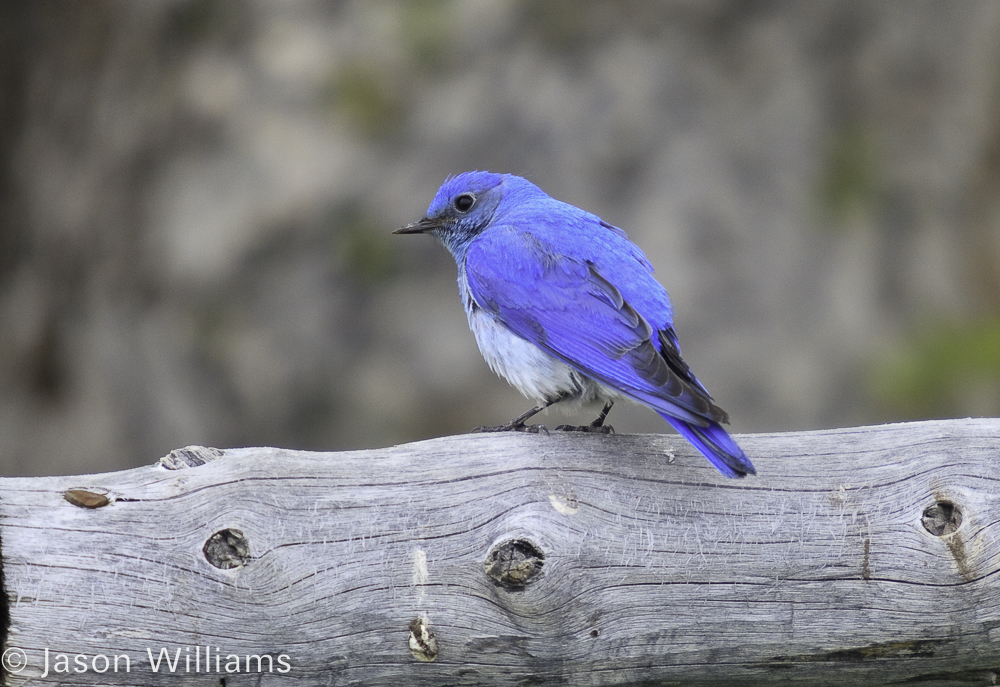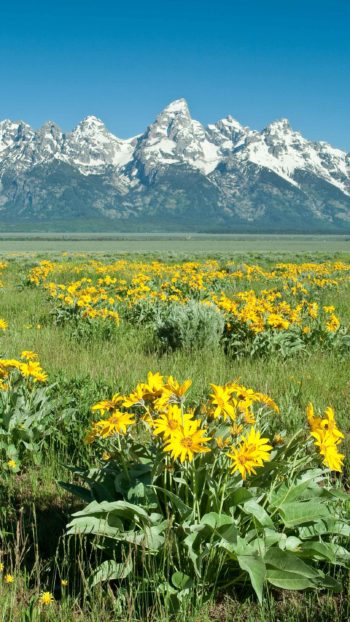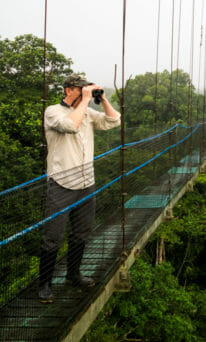Recent flooding on the Gros Ventre River made local headlines earlier this month when high, fast moving water resulted in significant damage to roads and bridges along the river corridor. However, an occupied home that was also seriously threatened went relatively unnoticed, perhaps because the residents were small, winged, and blue.
The National Elk Refuge is home to a Mountain Bluebird trail along the Refuge’s western boundary. The 110 nest boxes are spaced 100 yards or more apart along the Refuge’s fence line, paralleling Highway 89/191 and the multi-use pathway. With the distinction of being the largest Mountain Bluebird trail in the continental United States, the nest boxes provide essential breeding locations and offer an opportunity to gather much-needed, long-term scientific data.
Bluebirds are cavity nesters, generally depending on nest sites in decaying trees or holes excavated by other cavity-nesting bird species such as woodpeckers. Because of a decrease in standing aspens, cottonwoods, and other riparian vegetation, many of this region’s Mountain Bluebirds breed in artificial nest boxes.
According to the North American Breeding Bird Survey, the loss of open acreage in the western United States, coupled with the suppression of wildfires, has led to a population decline of roughly 24% between 1966 and 2015 of the iconic cerulean bird. Because Mountain Bluebirds readily take to nest boxes, trails like the one on the National Elk Refuge offer breeding locales as mitigation for the habitat loss.
For the past 13 years, the Jackson Hole Wildlife Foundation has maintained the Refuge’s Mountain Bluebird trail. Supported by the organization’s Nature Mapping Jackson Hole program and its corps of dedicated volunteer citizen scientists, Mountain Bluebird trail work includes cleaning the boxes prior to nesting season, then checking and recording seasonal use of the boxes, each of which is clearly numbered.
The bluebird trail work this season was interrupted in June by the high water runoff from the Gros Ventre River. The northwest corner of the Refuge near Highway 89/191 flooded, with several feet of standing water coming within inches of several of the bluebird boxes erected along the fence line.
Nature Mapping volunteers grew concerned, knowing one of the boxes near the river corridor had a successful nest of four chicks who were likely to fledge soon. When the flood water receded, they were overjoyed to spot two healthy fledglings just south of the now-empty box.
Though chicks often choose to drop to the ground first and stay there awhile when they fledge, they’re born with all their flight feathers and the ability to fly short distances. These two little birds must have instinctively known to get some distance on their wings right away, flying roughly 100 yards from their box to drier ground. The two other chicks were not seen, but no sign was a good sign because it indicated they likely survived their exit from
the nest box as well.
As fate would have it, these four chicks were the only ones along the Mountain Bluebird Trail not uniquely identifiable, leading the volunteers to assume they had come from the box most in jeopardy from the high water. All the other chicks along the trail had recently been banded as part of a larger research project that will provide a more complete story about individual
birds and the local population as a whole. The banding project and resulting data will allow researchers to evaluate survival rates of young, dispersal patterns, and other measures of population dynamics.
To read more about the Mountain Bluebird banding project, visit the Jackson Hole Wildlife Foundation’s web link at http://jhwildlife.org/nature-mappers-help-with-mountain-bluebird-banding/.
Article provided by The National Elk Refuge.



